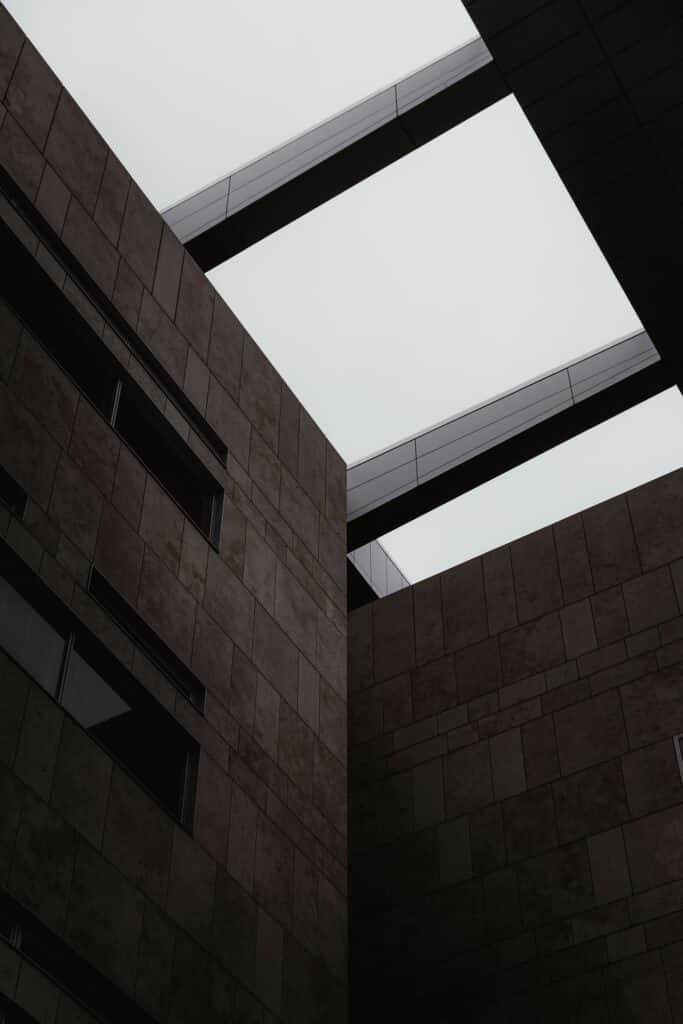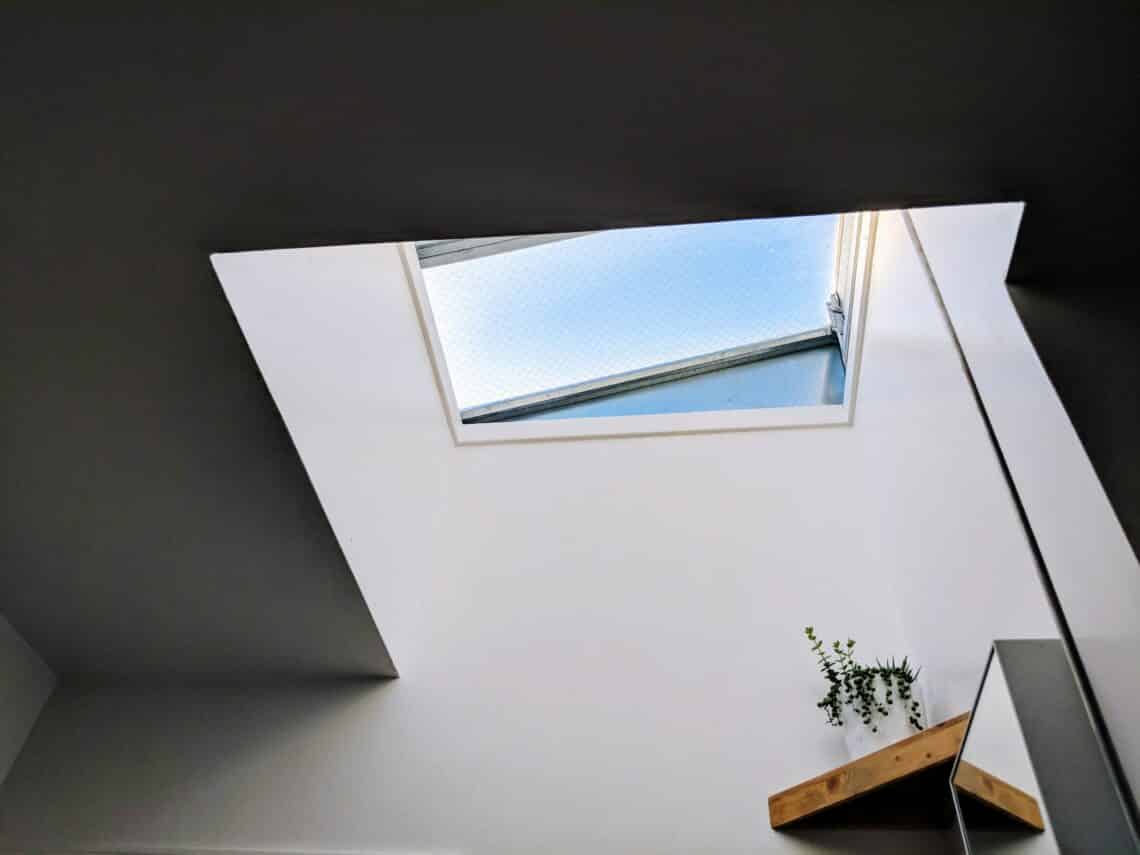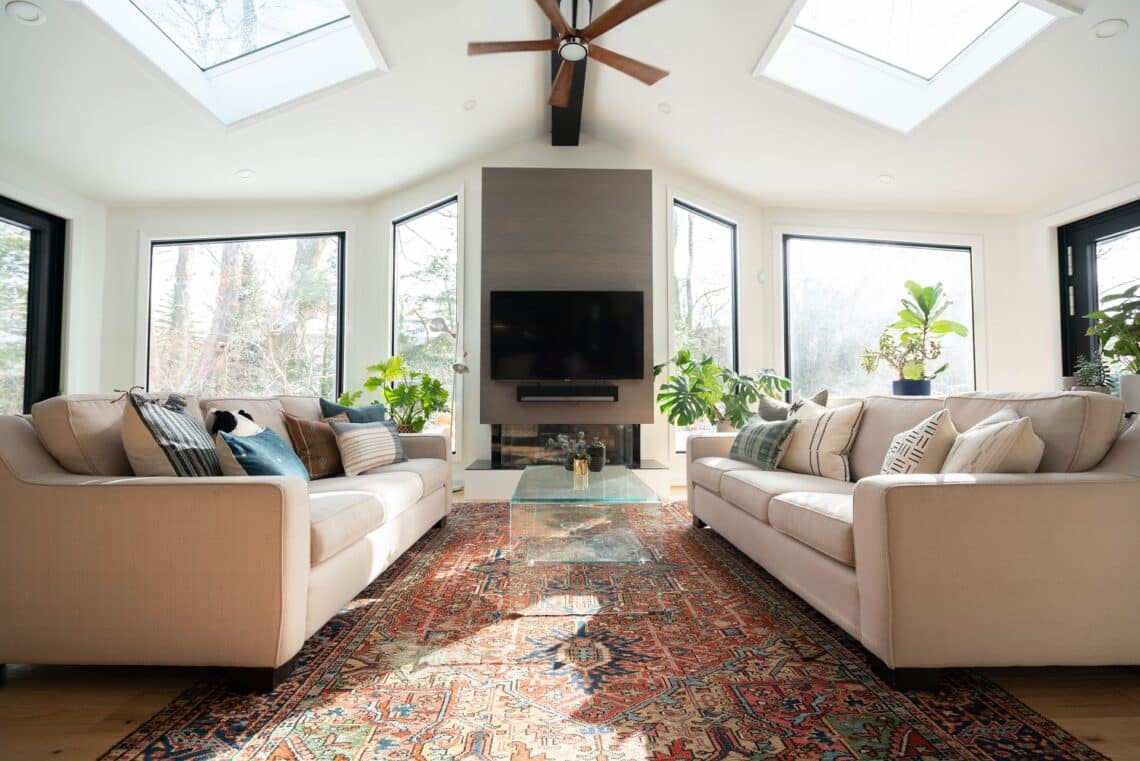Are you thinking about turning the attic into a small room for guests or possibly your personal space?
If yes, then you’re probably also wondering about installing a skylight. The skylight’s primary purpose is to offer protection against rain and wind, but along with that, it delivers a sophisticated look to your home.
You can look outside at the bounty of nature or curl up with a book in bed and read for hours. Everything in the room revolves around the skylight, and unlike traditional windows, you can play with your imagination and decorate your space accordingly.
Moreover, it keeps the moisture limited to the roof while flashing kits help shed the water without relying on sealants. There are many more benefits to using skylight flashing, and if you’re interested, read on to know all about it.
What is Skylight Flashing?
Skylight flashing is a protective material used to seal and waterproof the junction between a skylight frame and the surrounding roof. Its primary function is to divert water away from the skylight, preventing leaks and potential damage to the structure. Typically made of metal or rubber, it is an essential component for any skylight installation to ensure long-term durability and performance.

Why is Flashing Important?
By installing the flashing, you can rest assured that your skylight will not leak. You shouldn’t be casual in such scenarios and do away with the flashing, which will cause water seepage.
On occasions, the problem isn’t apparent from the start, and once you realize what’s wrong, it may be too late, and you’ll have to undertake numerous structural changes. So, rather than making additional expenditures, it’s better to thoroughly follow the steps and install the flashing for lasting benefits.
Moreover, it also helps keep other structural issues like rusting and mold growth at bay, thereby saving you from the hassle of regular maintenance.

Installing Skylight Flashing
No skylight installation is complete without proper flashing. You’ll have to get hold of skylight flashing kits, but don’t worry as they are available with the skylight itself. And by following the correct installation procedure, you get much-needed longevity by making the entire structure way more reliable.
We’ve narrowed down deck-mounted skylight flashing kits and curb-mounted skylight flashing kits as the two best types, suited to most roofing materials or Velux skylights.
Deck Mounted Skylight Flashing
For deck-mounted skylight flashing, the deck seal is nailed directly onto the roof. The all-weather underlayment, which consists of vast strips of durable tape applied to the deck seal, further bolsters it. The taping goes all the way up the sides of the skylight and over the surface surrounding it.
Curb Mounted Skylight Flashing
For curb-mounted skylight flashing, you’ll see that it comes with a gasket, which helps form a tight seal between the skylight and curb. Furthermore, the curb that houses the skylight is wrapped similarly in an all-weather underlayment, as seen with the mounted deck system. It’s vital to fit the underlayment before you start with the flashing.
Steps Involved in Skylight Flashing
We suggest that you install extra layers of protection to make the entire structure leakproof. You can then use your flashing kit components, which include still flashing, step flashing, and saddle flashing.
You’ll require all three components, but first, you’ll have to start with the still flashing by placing it at the bottom of the skylight. So, begin by installing roofing materials on the underlayment’s bottom edge to form the flashing base.
Then place the still flashing at the skylight’s floor and make sure to set the shingles close to the skylights. By doing this, you can adequately cover the bottom flashing and secure it in place by nailing it down.
In case you have a fixed skylight, you’ll have to use the rubber gasket situated at the bottom of the structure and bring it over the still flashing. It, therefore, helps to provide proper drainage and ensures that you don’t encounter any leakage issues. Remember to double-check whether the still flashing is securely in place before moving on to the next step.
You’ll have to use the shingles and the step pieces and interweave them along the side of your skylight. It’s necessary to nail down all the components with at least two nails for added security. So, make sure the second nail is closer to the skylight’s top edge but not so tight that it damages the frame.
Additionally, if you notice the full step piece extending beyond the top of the skylight, don’t make the mistake of leaving it out. You need to cut it down to size and fix it securely below the structure’s top edge.
Once the shingles and step pieces have been fitted around the skylight, you can reinstall the cladding, which was initially taken down for installation. After the cladding is in place, it’s time to use the saddle flashing and install it over the cladding.
To secure the saddle flashing and cladding to each other, you need to bed the tabs and fold them to fit into the saddle flashing slot. Next, it’s time to interweave the top flashing with the underlayment you used to cover the roof.
Finally, you can add your roofing materials around the skylight. But remember to leave a 4-inch gap between the top of the flashing and the shingles’ base.

Things to Consider
Apart from these, there are several other flashing techniques, such as counterflashing or cricket flashing. On occasions, some skylights come with self-flashing, thereby ensuring that continuous flashing is incorporated as part of the unit. But no matter the flashing you opt for, it’s important to remember certain things.
Firstly, if there’s condensation forming on the skylight’s interior, don’t jump to the conclusion that it’s a leak. While leaking is one factor, another reason could be the inadequate insulation used along the sides.
Secondly, you can add a skylight to flat roofs if you need more light in the room. You can do so by building it on a frame on top of the main roof deck. But it should be slightly tilted to allow the water to run off. Also, since you’re building it on a flat roof, it’s easier to work with, and you can access the skylight from the deck.
Tubular Skylight
There’s also something called a tubular skylight, which we feel merits a mention due to its fantastic versatility. If a room isn’t substantially sized to install a traditional window or doesn’t receive much light from the roof, the solution is to establish a tubular skylight.
You can install one using a shaft that starts from the roof and extends through your home. The tube effectively captures the sunlight from the rooftop and redirects it with a reflective post. And the light is eventually diffused through the interior of your home.
The method’s primary advantage is that tubular shafts come with superior optics that provide more light coverage. It encompasses a larger surface area while you can reposition the tube depending upon any obstructions.
Moreover, the versatility is on full display regarding the range of sizes available from 10 inches to 21 inches. It’ll also please you to know that it’s a highly energy-efficient structure that allows you to install additional components like bathroom fans and electric light kits.
We have reached the end of our guide, and hopefully, you know everything there’s to know about skylight flashing.
Skylight flashing is critical to keep your house in prime condition. You can choose from the numerous types of skylights available and then opt for the flashing technique best suited to you. Once installed, you no longer have to worry about leaks, thereby ensuring that you can convert your attic into a terrific living space.
That’s all for now. Until next time, Ciao!


